If you run a B2B service company, you’ve probably been burned by vague SEO promises. You care about pipeline, not pageviews. Same here. So I’ll talk like an operator. Think of an anonymized mid-market IT services firm stuck at roughly 3,200 monthly organic visits, 12 SQLs a month, and a lumpy pipeline. Ninety days later, search clicks were up 64%. At six months, they reached about 18,700 organic visits, 56 SQLs per month, and roughly 1.9 million dollars in sourced pipeline tracked in a CRM. ACV sat near 42k, win rate around 24%, and payback landed at month seven. No magic. Just sound execution, a clear model, and reporting that tied content to revenue. Your mileage will vary, but the system is repeatable.
B2B SEO and how to evaluate it
Great SEO for B2B services looks different. You’re selling high-consideration solutions to a buying committee, not sneakers to a solo shopper. Intent matters more. Proof matters more. And patience pays off - but only if you can measure progress in a way that makes your finance team nod.
In practical terms, I run two tracks side by side. Track one delivers quick wins that move rankings now. Track two builds authority that compounds over quarters, not days. If an outside partner can’t show both tracks on one page, with named owners and dates, that’s a risk you don’t need.
Here’s what I’ll lay out: a timeline, a simple ROI model you can use, a strategy framework, and the assets that turn traffic into qualified conversations. I’ll keep jargon light, math tight, and expectations clear.
SEO timeline
Here’s the 30, 60, 90-day plan many B2B teams follow for predictability. Your site size and sales cycle will influence pacing, but the milestones hold up.
Week 1 to 2
- Deliverables: Analytics and webmaster audits, CRM connection, keyword gap analysis, and a full technical crawl.
- Leading signals: Tracking is fixed, crawl errors cleared, top pages mapped to intent, baselines set in one dashboard.
- What you’ll notice: A single view of sources, sessions, conversions, and revenue attribution. Less guesswork already.
Week 3 to 4
- Deliverables: Technical fixes shipped with a prioritized backlog, on-page rewrites for top 20 pages, internal link sprint for revenue pages, title and meta refresh.
- Leading signals: Index coverage improves, time to first byte trimmed, rankings begin to wiggle on target clusters.
- What you’ll notice: Faster site, clearer pages, and stronger internal links pointing to decision pages.
Days 30 to 60
- Deliverables: First wave of BOFU content and service pages live; comparison and alternative pages drafted; FAQ and case study structure enhanced; digital PR and partner content outreach started.
- Leading signals: More impressions on decision queries, higher click-through rates on updated titles, new pages indexing within a week.
- Lagging outcomes: Rankings begin to climb on low to medium difficulty terms. First assisted conversions appear.
Week-by-week view during this phase
- Week 5: Two to four decision pages live, internal links expanded, crawl budget cleaned.
- Week 6: One to two case studies published with structured data, partner page in review.
- Week 7: Technical backlog at ~60% complete, first earned mentions secured.
- Week 8: Ranking movement across 10 to 20 keywords, especially long-tail. First SQLs attributed to organic if the sales cycle is short.
Days 60 to 90
- Deliverables: A pillar page plus 3 to 5 clusters live, industry landing pages built, ROI explainer content published, ongoing link acquisition, and content refreshes for decayed posts.
- Leading signals: Steady growth in non-branded clicks, rising average position for core topics, more branded search from awareness content.
- Lagging outcomes: SQL growth follows if your sales cycle is 30 to 60 days. If it’s longer, you’ll see MQL lift now with SQLs trailing.
By day 90, expect leading indicators to be obvious: more pages indexed, higher click-through rates, better average positions, and engagement that looks healthy. SQLs may trail if your cycle is long. That’s normal. Keep weekly reports simple and honest.
SEO ROI
I keep the math boring in the best way. Here’s the model I use. Plug in your numbers and keep units consistent.
ROI formula
(Total clicks x CTR-to-visit x CVR to MQL x MQL→SQL x SQL→Customer x ACV) - Cost
Example with simple inputs (monthly clicks; ACV is annual)
- Total clicks: 25,000
- CTR-to-visit: 100% if clicks already reflect visits in your report
- CVR to MQL: 2.5% for BOFU-heavy pages
- MQL→SQL: 40%
- SQL→Customer: 20%
- ACV: 35,000 dollars
- Monthly SEO cost: 18,000 dollars
Math
25,000 x 1.00 x 0.025 x 0.40 x 0.20 x 35,000 = 1,750,000 dollars in sourced annual contract value
Monthlyized new ACV: 1,750,000 ÷ 12 ≈ 145,833 dollars
ROI for the month (ACV impact): 145,833 - 18,000 = 127,833 dollars
Break-even and payback
- Per-click ACV value at these rates: 0.025 x 0.40 x 0.20 x 35,000 = 70 dollars ACV per click
- Break-even incremental clicks: 18,000 ÷ 70 ≈ 257 incremental clicks to cover monthly cost in annual ACV terms
- Payback window: If monthly click growth is ~15% and you’re adding incremental clicks above your baseline, you’ll typically cross break-even ACV impact around month 2 to 3 depending on mix and sales cycle length
Tie this to your CRM
- Track both first-touch and last-touch
- Instrument key events (demo request, pricing view, contact submissions) with clean campaign parameters and event tracking
- Build sourced and assisted views; both matter in B2B
One note that trips teams up: conversion rates vary by page type. Decision pages often convert at 2 to 5%. Topical explainers might sit at 0.2 to 0.8%. Don’t blend them. Model them separately so forecasts reflect reality.
SEO strategy
A simple four-part framework keeps B2B SEO moving without chaos. Think of it as a set list, not a rulebook.
1) ICP and buying-committee research
- Interview 5 to 10 customers. Ask what triggered the search, who weighed in, and what nearly killed the deal.
- Mine call recordings to collect exact phrases.
- Map questions to each role: champion, economic buyer, security, legal. Trust markers matter to every role (yes, including legal).
2) Keyword clustering by intent and stage
- Group terms into decision, consideration, and awareness clusters
- Decision: “service + pricing”, “vs competitor”, “best for [industry]”
- Consideration: “how to solve [problem]”, “framework”, “template”
- Awareness: “what is [concept]”, “examples”, “benefits”
- Prioritize by business value and fit, not just search volume
3) Content velocity and topical authority map
- Publish on a consistent beat. Two to four pieces a week for 8 to 10 weeks can build topic depth fast.
- Pair every pillar with 3 to 7 cluster pieces. Interlink with descriptive anchors.
- Refresh decayed content monthly. A republish often outperforms a brand-new post.
4) Technical foundations and digital PR
- Address speed, indexing, canonicals, and structured data early
- Add schema to case studies, FAQs, and product or service pages
- Build links with thought leadership, partner content, and data-driven pieces. A few strong links beat a pile of filler.
If this feels almost too simple, good. Complexity can impress in a slide deck. Teams win by repeating easy steps done well.
B2B lead generation
Traffic only matters if it turns into revenue conversations. These assets pull their weight.
- BOFU service pages: Each core service gets a page with outcomes, process, proof, and social proof. Add pricing signals even if you sell via quote. A soft anchor like “typical project ranges” calms buyers.
- Comparison and alternative pages: “[You] vs [Other approach]” and “Top alternatives to [competitor]” attract in-market buyers. Keep tone fair. No mud-slinging. It signals confidence.
- ROI explainers or simple calculators: Keep inputs minimal and outputs clear. Show payback in months and cost of delay.
- Industry landing pages: Speak to vertical pain. Language for healthcare differs from fintech. Reuse your framework; switch the examples and compliance notes.
- Partner pages: If integrations matter, write dedicated pages for each partner. Link both ways when appropriate.
- Case studies with schema: Tight narrative. Problem, approach, outcome. Use real numbers from your CRM. Structure the page so machines can read it.
Internal linking sprints move the needle. Every month, comb through high-traffic posts and add fresh anchors pointing to decision pages. Think “request pricing”, “see how I solved X”, or “compare approaches” as the prompts baked into copy.
Patterns that lift conversions
- Sticky request buttons on mobile
- Short forms up front, longer qualification later
- “See it in action” modules for complex workflows
- Lightweight chat that routes to sales only when intent is clear
Search rankings
Rankings change for two reasons. You did something smart. Or your competitors paused. Aim for the former.
Quick wins you can ship this month
- Rewrite titles to boost click-through by 2 to 5 points. Add numbers, outcomes, and a clear benefit.
- Add FAQ sections to key pages and mark them up accordingly.
- Fix cannibalization. If two pages target the same intent, merge them and redirect.
- Refresh decayed posts. Update facts, add new examples, tighten intros, and republish.
- Update internal anchors. Move from generic “learn more” to precise phrases that match the target query.
Compounding moves that build over quarters
- Authority pillars: One deep pillar plus supporting clusters for each revenue topic you sell. Think 8 to 12 pieces per topic.
- Digital PR: Publish original data, partner studies, and contrarian takes. Pitch to relevant publications. A few strong links beat a pile of filler.
- Entity optimization: Use clear organization, people, and product entities across your site. Strengthen knowledge signals with consistent details, author bios, and structured data.
One tension to hold: “hacks” create quick pops, but they fade. Systems feel slower at first, then outrun hacks by a mile. Do both - quick wins to stabilize, systems to compound.
Organic traffic
Turning visits into pipeline is where many teams stumble. It’s not just forms. It’s flow.
- Intent-aligned prompts: Decision pages get short forms, pricing signals, and social proof. Consideration pages get light demo invites and related guides. Awareness posts invite a logical next step, not a hard sell.
- Request pricing and demo modules: Place above the fold, mid-page, and at the end. Test microcopy, not just button color. “See a walkthrough” often beats “Book a demo.”
- Chat playbooks: Use live chat for quick routing. Trigger chat when readers scroll past 50% on decision pages or view pricing. Keep questions short.
- Retargeting from organic: Build remarketing segments from organic visitors in your paid platforms. Serve case-study clips and walkthroughs to high-intent cohorts.
- Content-to-sales enablement handoff: Turn top content into battle cards, snippets for reps, and 90-second screen-share videos. When sales uses your content, win rates rise.
Benchmarks to sanity-check
- Visit to MQL: 1 to 3% on decision-heavy paths
- MQL to SQL: 30 to 50% when qualification is clean
- SQL to Customer: 15 to 30% for fit accounts with a crisp demo or scoping call
If you’re far below those ranges, look for friction: slow pages, unclear copy, weak trust signals, or a form that asks for a blood type.
Choosing a B2B SEO agency
Hiring outside help should feel like bringing on a growth partner, not a vendor. Here are practical criteria I use.
What to expect from a strong partner
- Revenue accountability: They report sourced and assisted pipeline, not just impressions.
- Weekly reporting: One dashboard, one owner, one narrative.
- Ownership of content and outcomes: They write, edit, publish, and measure. No handoffs when it gets hard.
- SLA on deliverables: Dates for pages, technical fixes, and outreach. Slipped dates get flagged before they slip.
- Attribution setup: Analytics, webmaster tools, CRM integration, and event tracking are configured and tested.
- PR and backlink approach: Specific targets, legitimate stories, and a quality-first plan that won’t haunt you later.
- ICP and buying-committee work: Interviews, call mining, and a messaging brief someone in sales actually reads.
Red flags
- Vanity metrics: “You’re up 200% in impressions” with no movement in SQLs.
- Unclear scope: “We’ll handle SEO” without a content count, technical backlog, or outreach plan.
- No source-of-truth dashboard: If reporting jumps across six sheets, errors will creep in.
- Ignoring your sales cycle: Promising revenue in 30 days for a 120-day sale is a tall tale.
Timing jitters are real. If you sell complex services with a 4 to 6 month cycle, your content can fire on all cylinders and still show revenue later. That’s not failure. That’s physics. Watch leading indicators weekly and the pipeline view monthly.
Practical wrap-up
- Treat SEO as a program, not a project. Projects end. Programs compound.
- Publish decision content early. You can write thought pieces forever, but buyers want proof and pricing signals now.
- Keep technical debt low. It’s easier to fix eight issues than eighty.
- Sync with sales monthly. Ask where they struggle on calls. Then write the page that makes those calls easier.
You don’t need hype to win here. You need clear goals, honest math, and a crew that shows up every week. If a B2B SEO partner can put that in writing, you’ll sleep better and your pipeline will grow without you micromanaging every move. And that’s the real test.

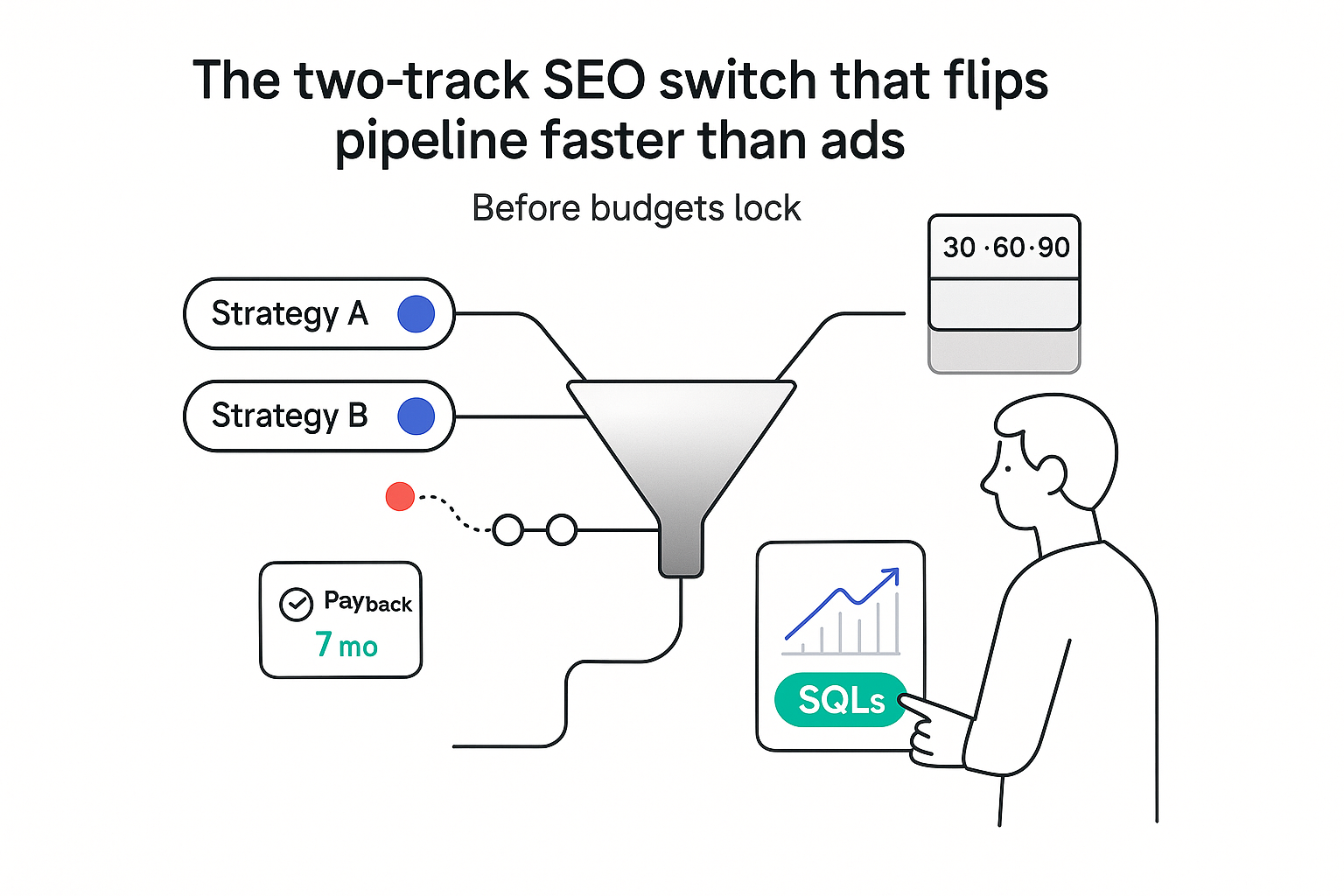

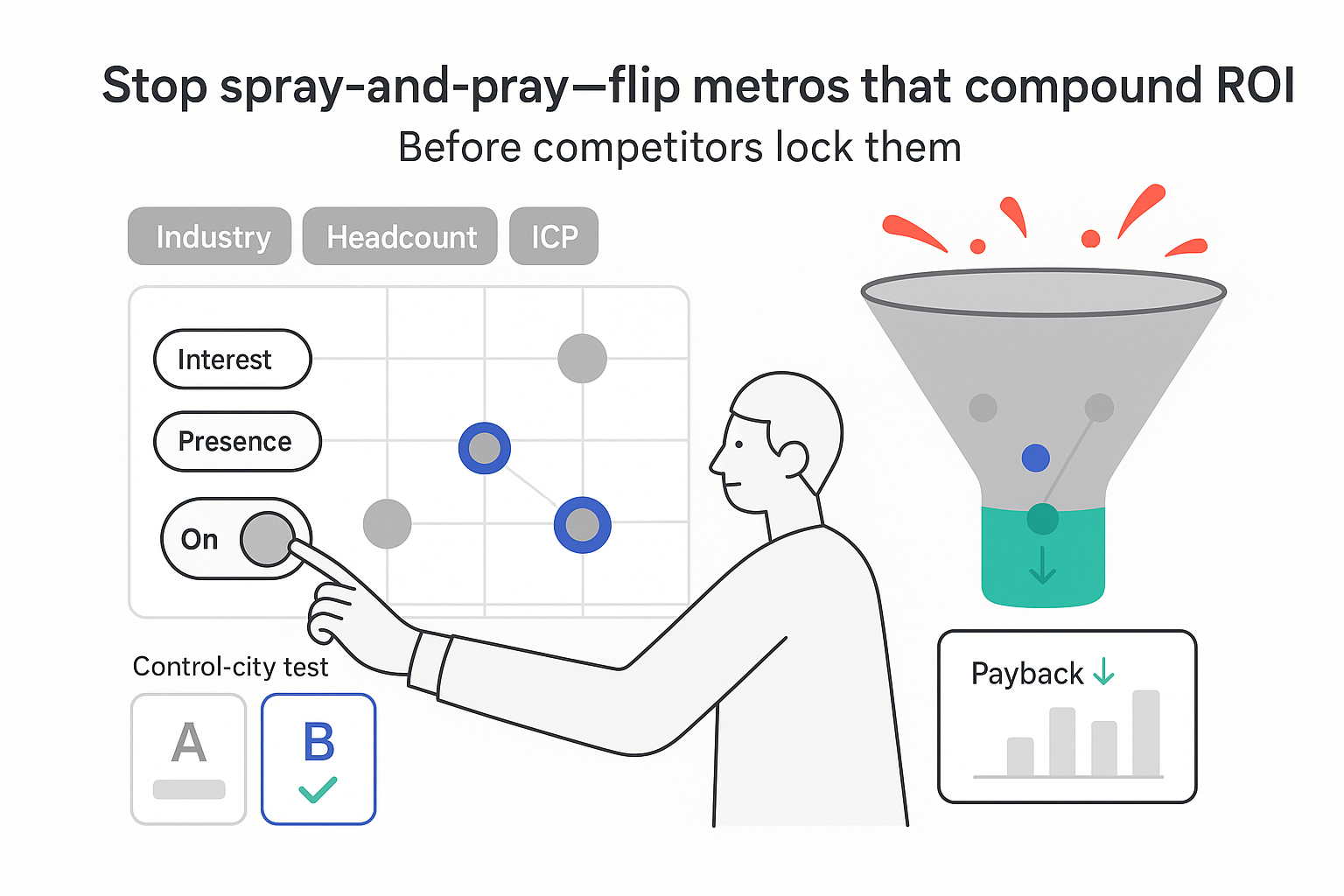
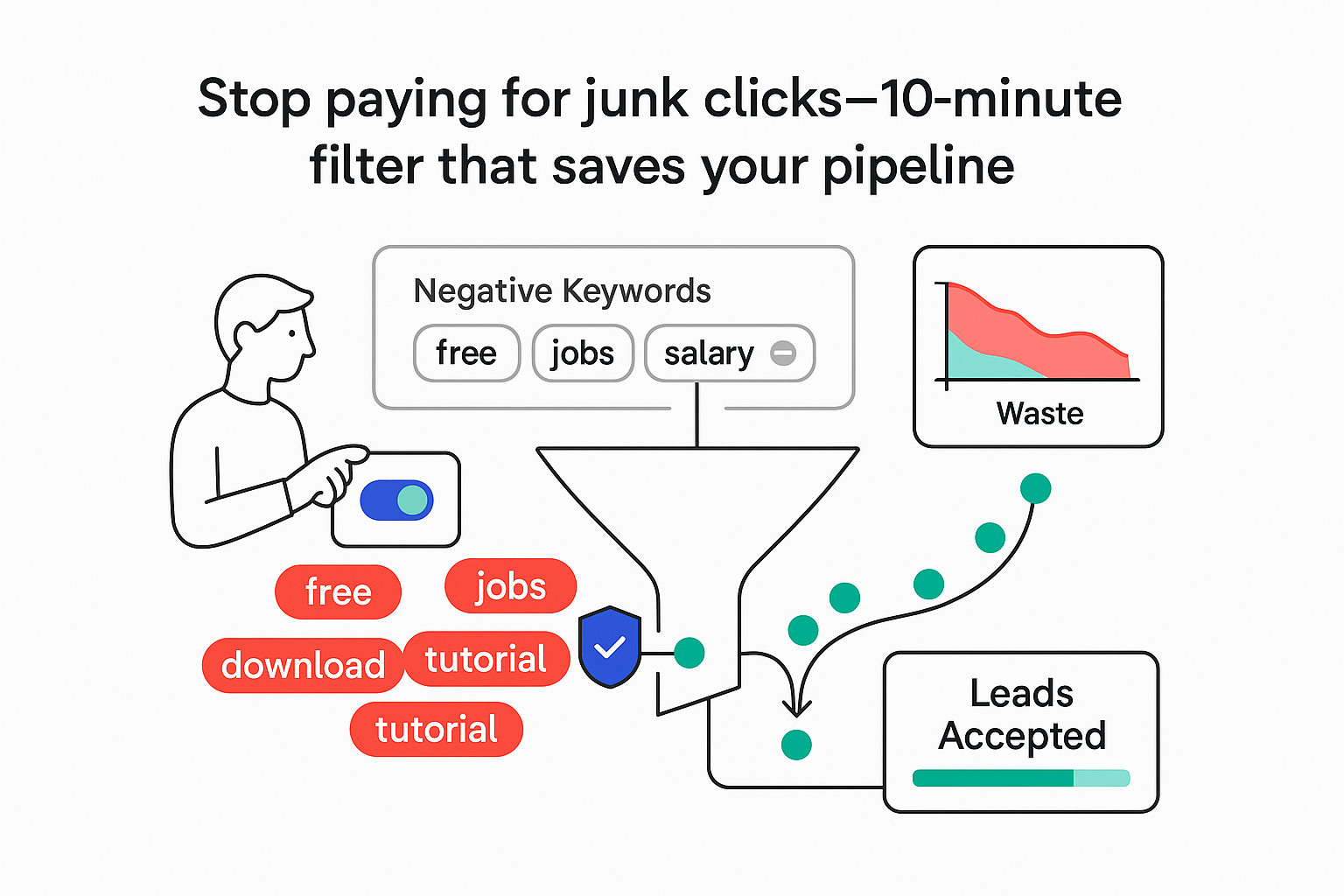
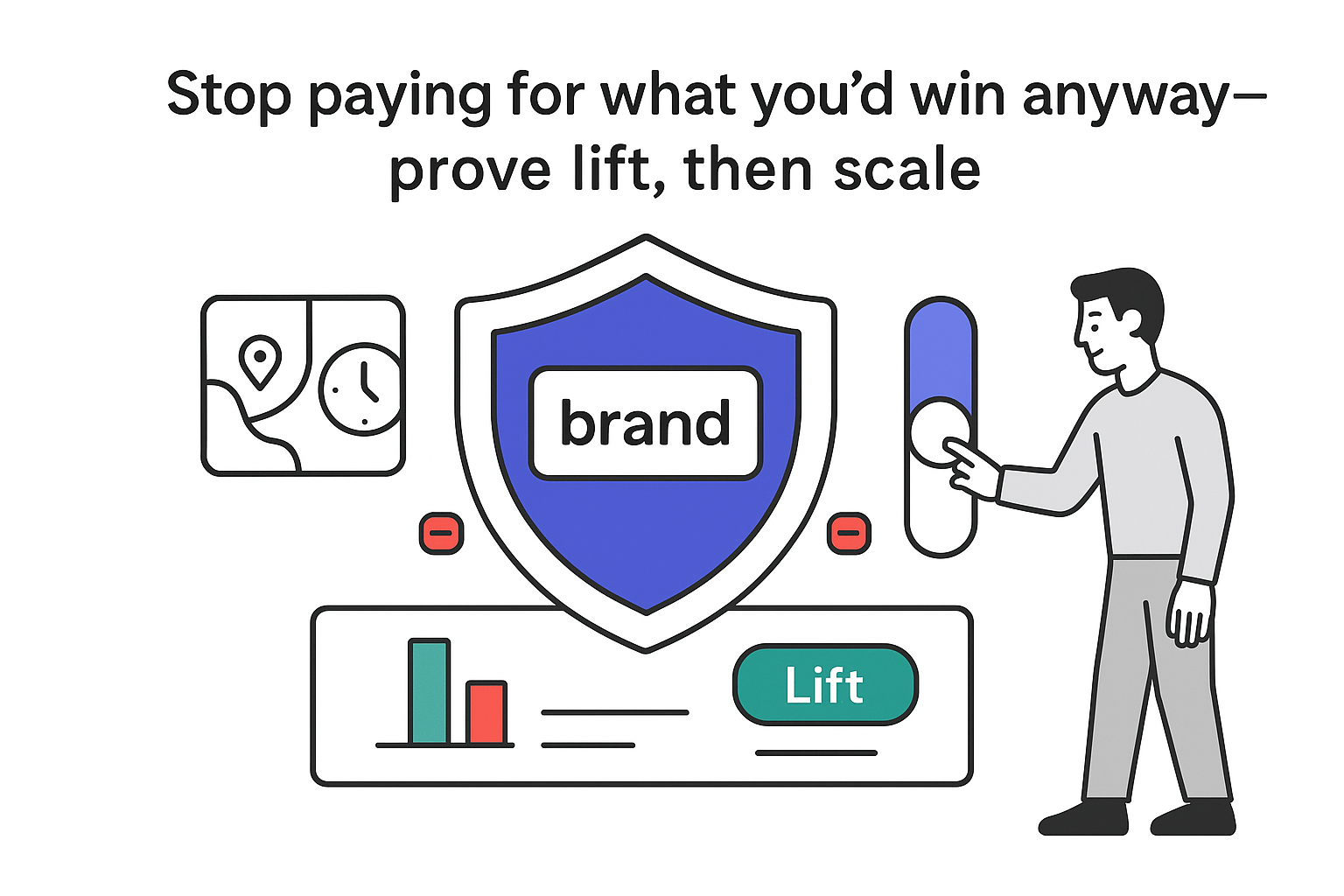
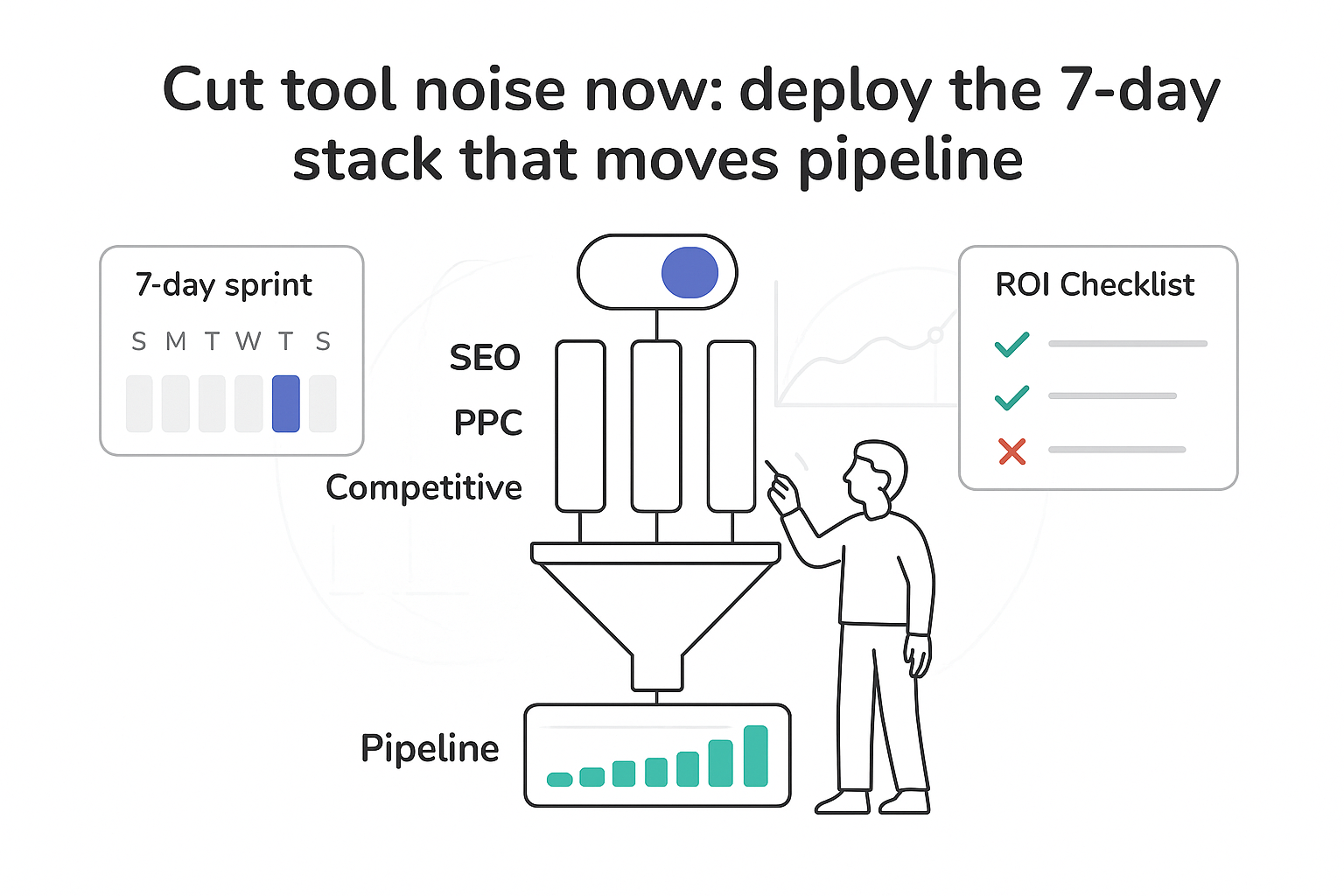
.svg)